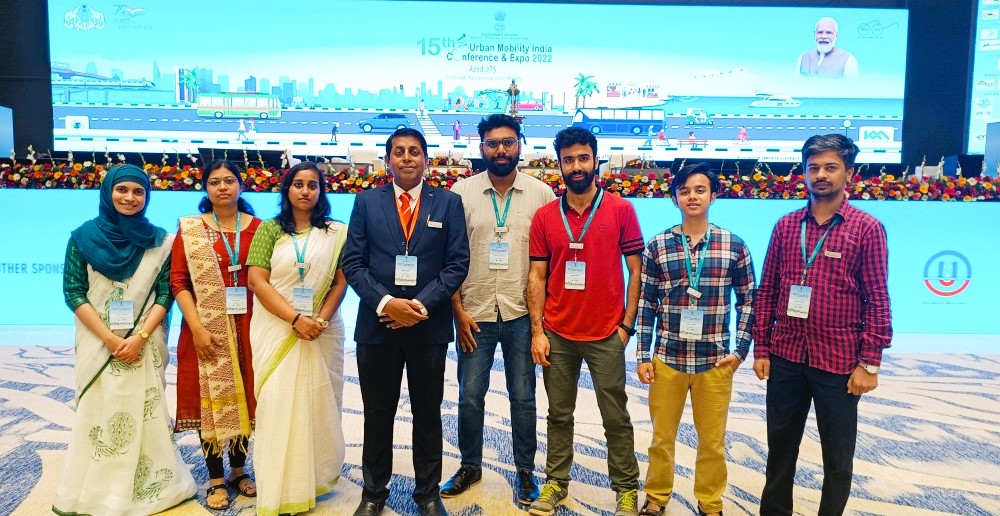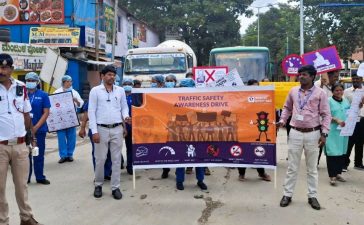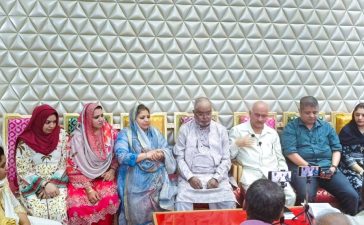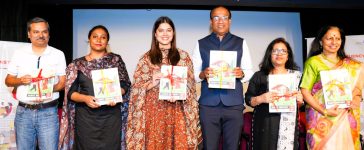Citizens Reimagine a Livable Bengaluru at IISc Design Jam
Workshop sparks community-driven ideas to transform the city’s streets, transit, and sustainability landscape
Bengaluru: In a powerful display of civic engagement and collaborative thinking, the Indian Institute of Science (IISc) hosted the Reimagine Livable Bengaluru Design Jam, bringing together citizens from diverse backgrounds to chart a people-first vision for Bengaluru’s urban future. Organized by the Sustainable Transportation Lab (IST Lab) at IISc, the workshop served as a prelude to the upcoming World Symposium on Sustainable Transport and Livability, a global biennial platform that aims to redefine urban mobility and livability.
Held on the IISc campus, the event welcomed residents, students, professionals, and urban planners to share their insights on streets, neighborhoods, transit hubs, and sustainable infrastructure. Participants engaged in hands-on sessions to diagnose pressing urban challenges and co-create innovative, citizen-centric solutions.

“This Design Jam is about reclaiming our city for people, not just vehicles,” said Prof. Ashish Verma, founder of the IST Lab. “By involving citizens in the planning process, we are tapping into lived experiences to shape more resilient and inclusive urban environments.”
Grassroots Ideas for a Livable City
The event sparked a range of actionable proposals aimed at improving the day-to-day urban experience. Among the most discussed ideas were:
-
“Happy Roads” inspired by the success of pedestrian-friendly Church Street, aimed at making more public spaces walkable and vibrant.
-
Revamped foot overbridges, designed with safety, accessibility, and user experience in mind.
-
Rainwater recharge systems at critical points like Majestic Bus Terminal to mitigate waterlogging during monsoons.
-
Enhanced solid waste management strategies, emphasizing community participation and decentralization.
-
Incentivizing corporate transport, particularly in Special Economic Zones, to reduce private vehicle use and ease traffic congestion.
“Simple, low-cost interventions like shaded walkways or better-designed footpaths can dramatically change how we interact with the city,” noted one participant, highlighting the transformative power of citizen-driven design.
Bridging Research and Real-World Impact
The Design Jam reflects the broader mission of the IISc Sustainable Transportation Lab, a pioneering research initiative founded in 2009. The lab is at the forefront of promoting sustainable mobility through evidence-based planning, policy development, and community engagement.
With research areas spanning climate change, travel behavior, quality of life, and system optimization, the IST Lab actively contributes to building cities that are not only efficient but also equitable and environmentally conscious.
“Urban sustainability isn’t just about infrastructure—it’s about improving lives,” emphasized Prof. Verma. “Through informed planning and public involvement, we can build cities that are healthier, happier, and more humane.”
Building Momentum for a Global Conversation
The insights from the Bengaluru Design Jam will help shape discussions at the forthcoming World Symposium on Sustainable Transport and Livability, where researchers, policymakers, and civil society will converge to explore global best practices and localized solutions.
As Bengaluru grapples with rapid urbanization and the pressures of growth, initiatives like this underscore the growing consensus: the future of cities must be co-created by the people who live in them.
“Events like this remind us that change begins at the street level, with ordinary citizens becoming agents of transformation,” said an attendee.

By fostering a culture of participatory planning and celebrating grassroots innovation, the IST Lab and IISc are paving the way for a more livable, inclusive, and sustainable Bengaluru.
📚 BACKGROUND
The Indian Institute of Science (IISc) hosted a unique community engagement event titled “Reimagine Livable Bengaluru Design Jam” on its campus, aiming to involve citizens in shaping the future of their city. This initiative was organized by the Sustainable Transportation Lab (IST Lab) at IISc, founded by Prof. Ashish Verma in 2009.
The event served as a precursor to the upcoming World Symposium on Sustainable Transport and Livability, a global biennial event. The lab, which focuses on sustainable mobility, climate change, and quality of life, seeks to bridge academic research and grassroots participation to foster inclusive urban development.
The Design Jam invited residents from all walks of life—students, professionals, homemakers, urbanists—to brainstorm practical, people-friendly solutions to everyday urban issues such as traffic congestion, poor pedestrian infrastructure, and inefficient public transit.
💬 KEY QUOTES
Prof. Ashish Verma, Founder, IST Lab:
“This Design Jam is about reclaiming our city for people, not just vehicles. We want urban planning to reflect the voices of those who walk its streets every day.”
“Urban sustainability isn’t just about infrastructure—it’s about improving lives. Our goal is to make cities not just functional, but joyful.”
Participant (Urban Design Volunteer):
“It was empowering to share our daily struggles and see them being turned into design ideas. Simple changes like shaded footpaths or timed pedestrian crossings can make a huge difference.”
Community Member from Vijayanagar:
“Our neighborhood lacks proper waste collection and drainage. At the workshop, we proposed using school campuses as hubs for community-based composting and rainwater harvesting.”
❓Q&A: Voices from the Design Jam
Q: What motivated IISc to hold a Design Jam for urban planning?
Prof. Verma: “We believe meaningful change begins with listening. Bengaluru’s challenges are not just technical—they’re social and experiential. This platform allows us to merge expertise with everyday reality.”
Q: How do these citizen ideas feed into policy?
Prof. Verma: “We’re documenting every suggestion, analyzing them with research tools, and presenting them at the upcoming Symposium and to local authorities. We aim for implementation—not just discussion.”
Q: What was your biggest takeaway as a participant?
Student Attendee: “That I don’t need to be an expert to contribute. I walk to college every day, and now I know I can help design better footpaths and crossings.”
![]()











